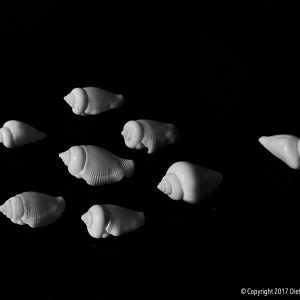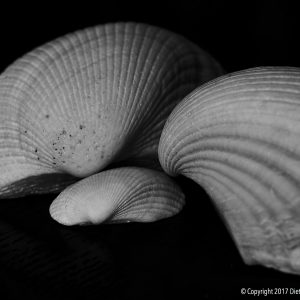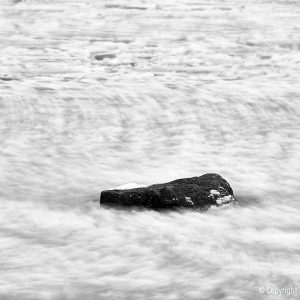
Now I got myself hooked on these shells. So I played some more with them and found out they can be quite useful for an investigation into storytelling.
There are quite a few photographers who think that every picture should tell a story. For a long time I myself was quite puzzled on what that really means, outside of documentary photography and journalism. That is until I understood that the real topic is how we process visual information.
In the picture on top there are just a few shells arranged by the photographer. But through arrangement of the objects in relation to each other, there seems a story to be forming. The story isn’t clear though. If all the shells in the group would have been of the same type, maybe an interpretation would have narrowed down to an “outsider” story. As they are not, it is up to the viewer to come up with the narrative, like “I’ve got enough”, or “Look it is more interesting over there”. But I would guess none of the stories viewers come up with would have anything to do with seashells or their biology and all would be somehow about (human) social relations.
We are really good at seeing or implying social relationships – often we just can’t help seeing them.
Like in the following photo:

Raise your hands, anyone who did see this just as two seashells and not a mother-and-child picture?
Or in the next photo, anyone not seeing a family?

One of the theories trying to explain how we developed such big brains says that we needed them to handle complex social relationsships. Our ability to so effortlessly construe social relationsships from sparse (visual) information might thus be one of our most innate human abilities.
For a nature and landscape photographer, however, there is a problem here. While it seems easy (and maybe tempting) to manipulate the viewer as I did in the above photos to provoke human interest, this is not the story I, at least, want to tell. I think nature has its own stories to tell but we are less used, or evolutionarily optimized, to see them.
Many art theorists have also maintained that art as a human endeavour is always about humans and human relations. While there is truth to this (both the artist and the viewer are human after all) I don’t think that has to be the end of the story (no pun intended).
Let’s take another example:

This picture is taken at the time of the ice break in the sea. Long exposure time contrasts movement of the broken ice against the dark solidity of the rock. The human aspect angle would maybe see here a metaphor; me in the storm of life. But I think the more interesting stories are in the seasonal changes in the sea, the movement of energies in nature and the interaction of the rock and the ice.
I think this is what many landscape artists have tried to convey: that nature is full of such stories beyond the immediate accessibility provided by “human interest”. Also, that in making the effort to read these stories we enrich our lives.
In his famous book “Thinking fast and slow” Daniel Kahneman describes the different thinking modes in the brain. Fast, pattern-oriented thinking that works almost instantly, but is often wrong; and slow, analytical thinking that takes effort and time but provides more exact results. I am wondering, whether something similar could be said about seeing. Maybe, in order to see the stories in nature we have to practice slow seeing.